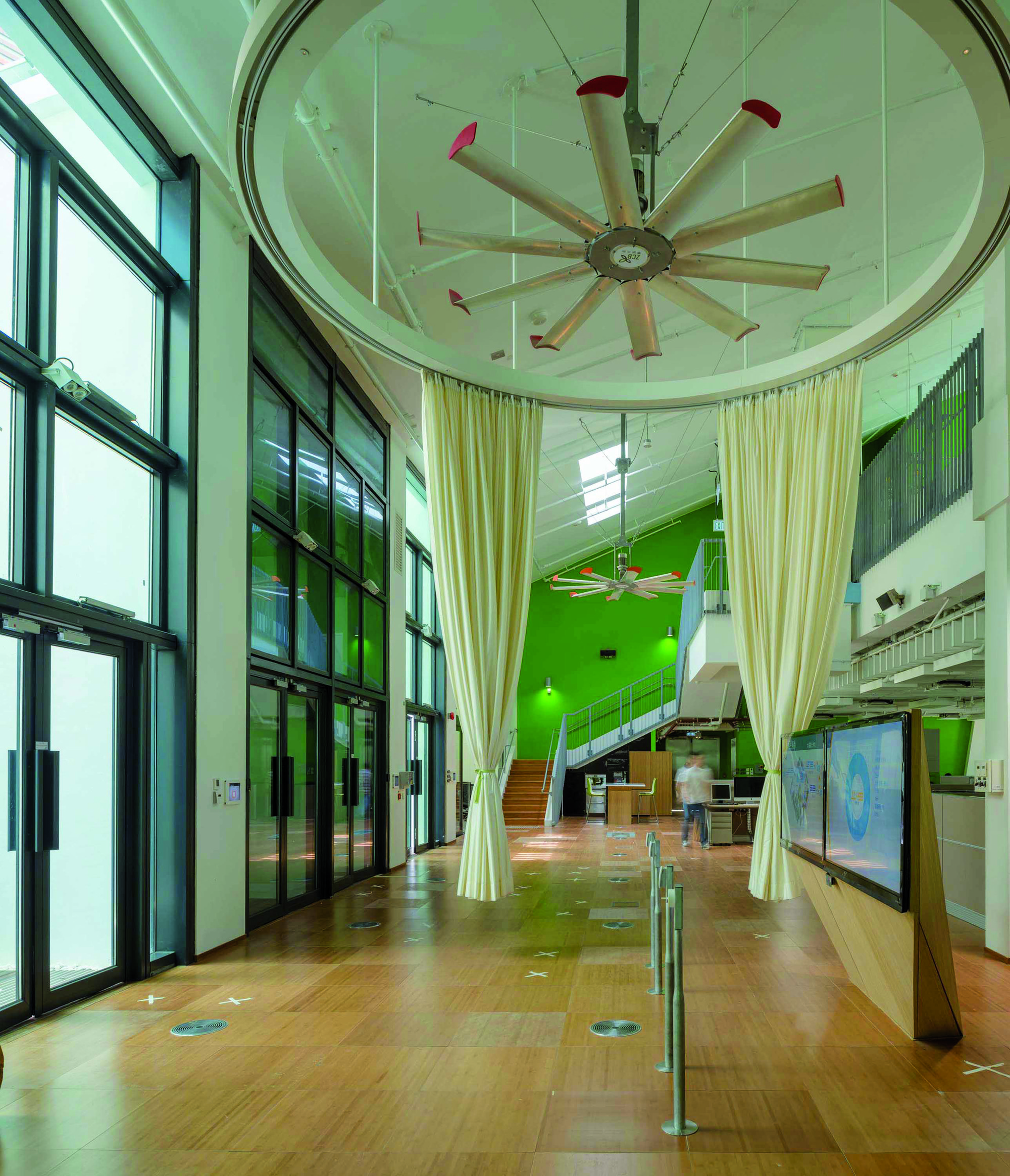Project Info
Architects: Ronald Lu and Partners
Location: Kowloon Bay, Hong Kong
Year: 2012
Area: 3,300 sqm
Photographs: Courtesy of Ronald Lu and Partners
Introduction
ZCB is the first zero carbon building in Hong Kong. Energy hierarchy with its priority on energy demand control is adopted. Passive design with climate-responsive built form, orientation, layout and envelope enhance natural ventilation, daylighting and solar shading. The spacious entrance hallway is orientated and fully opened to the prevailing summer breeze, and provides a comfortable setting for gathering and temporary exhibition without the use of air-conditioning. An ultra-low OTTV of 11 W/m2 is achieved mainly due to optimized window-to-wall ratio, deep overhang over the south facade, external shading fins, minimized east and west facades / windows, high performance glazing system, and shaded and insulated roof.
Details
These passive design measures are expected to reduce energy consumption by 20% as compared to the current building industry benchmark. The use of highly energy-efficient active systems like high-volume-low-speed fans, high temperature cooling system, coupling with smart control can further reduce the potential energy demand by 25%. The ZCB targets “Energy Plus” which goes beyond conventional scope of carbon neutrality by producing more energy than its own needs over an annual basis, to offset the embodied carbon of its construction process and major structural materials. On-site renewable energy generation by bio-diesel tri-generation and state-of-the-art photovoltaic (PV) technologies is adopted.
Eco-efficiency is the key design concept which targets for high environmental quality and minimized loading. Green, clean and lean design and construction approach with an emphasis on resource conservation for less material and less waste (e.g. fair-faced concrete, unpainted metal works) has been adopted. Balanced cut and fill for site formation introduces sheltered plaza and green terraces with surrounding formed berms and trees.
The construction debris savaged from demotion works were used as infill for the gabion planter walls around the berms, and no environmental loading of exporting the waste was resulted. Regionally manufactured eco-pavers would absorb air pollutants by their titanium oxide coating and did not require high embodied energy for transportation of the materials. Reinforced concrete with high PFA content was used to minimize the carbon footprint of the structure. Consideration for embodied carbon of the materials and construction becomes more important in the life cycle carbon footprint assessment in particular when the operational energy demand is reduced.
To evaluate and optimize ZCB’s building environmental performance and operation, a custom-developed BEPAD (Building Environmental Performance Assessment Dashboard) system is provided. The system acts as a graphical user interface (GUI) for interactive display of real-time data and track records of building environmental performances as monitored by the BMS (Building Management System) using over 2,800 sensing points in the building. Building environmental performances of the following 6 categories are displayed: energy use (EU), site aspects (SA), indoor environmental quality (IEQ), material aspects (MA), water use (WU) and occupancy data (OC). Four outdoor weather stations have been installed within the site to collect microclimatic data that will inform and optimize the performances of building services systems.









